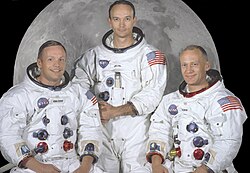The Indelible Legacy of Neil Armstrong: First Man on the Moon

Introduction
Neil Armstrong, an iconic figure in the history of space exploration, was not only the first human to set foot on the moon but also a symbol of courage and ingenuity. His achievement during the Apollo 11 mission on July 20, 1969, marked a monumental milestone in human history and ignited a global interest in space exploration. As we reflect on Armstrong’s impact, understanding his journey and contributions is essential, especially in light of ongoing advancements in space travel and exploration.
Early Life and Career
Neil Alden Armstrong was born on August 5, 1930, in Wapakoneta, Ohio. His fascination with flight began in early childhood, leading him to become a pilot by the age of 16. After serving as a naval aviator during the Korean War, Armstrong completed his degree in aeronautical engineering at Purdue University. His career as a test pilot and aeronautics engineer positioned him as a prime candidate for NASA’s astronaut programme.
Apollo 11 Mission
The Apollo 11 mission was a culmination of years of work by thousands of scientists and engineers and was launched on July 16, 1969. Alongside fellow astronauts Buzz Aldrin and Michael Collins, Armstrong’s historic lunar landing with the Lunar Module, Eagle, took place in the Sea of Tranquility. As he stepped onto the lunar surface, his words, “That’s one small step for [a] man, one giant leap for mankind,” resonated across the world.
Post-Moon Landing Life and Enduring Influence
Following his monumental achievement, Armstrong returned to a hero’s welcome but chose a life largely away from public attention. He taught aerospace engineering at the University of Cincinnati and served on various boards, including the National Commission on Space. His humility and dedication to education demonstrated his belief in the importance of inspiring the next generation of explorers.
Current Relevance and Legacy
In recent years, the legacy of Neil Armstrong has been revisited, particularly as new space missions are being launched by organisations such as NASA and private companies promoting space tourism. The resurgence of interest in lunar exploration, with missions aimed at returning humans to the moon, serves as a reminder of Armstrong’s role in paving the way for future generations of astronauts. Through film adaptations, documentaries, and literature, Armstrong’s legacy continues to inspire a global audience.
Conclusion
Neil Armstrong’s journey from a small-town boy with dreams of flying to the first human on the moon is a testament to what can be achieved through dedication and innovation. As we stand on the brink of a new era in space exploration, the influence of his accomplishments will resonate for years to come. Understanding his importance reminds us of the possibilities that lie in the pursuit of knowledge and adventure beyond our planet.








